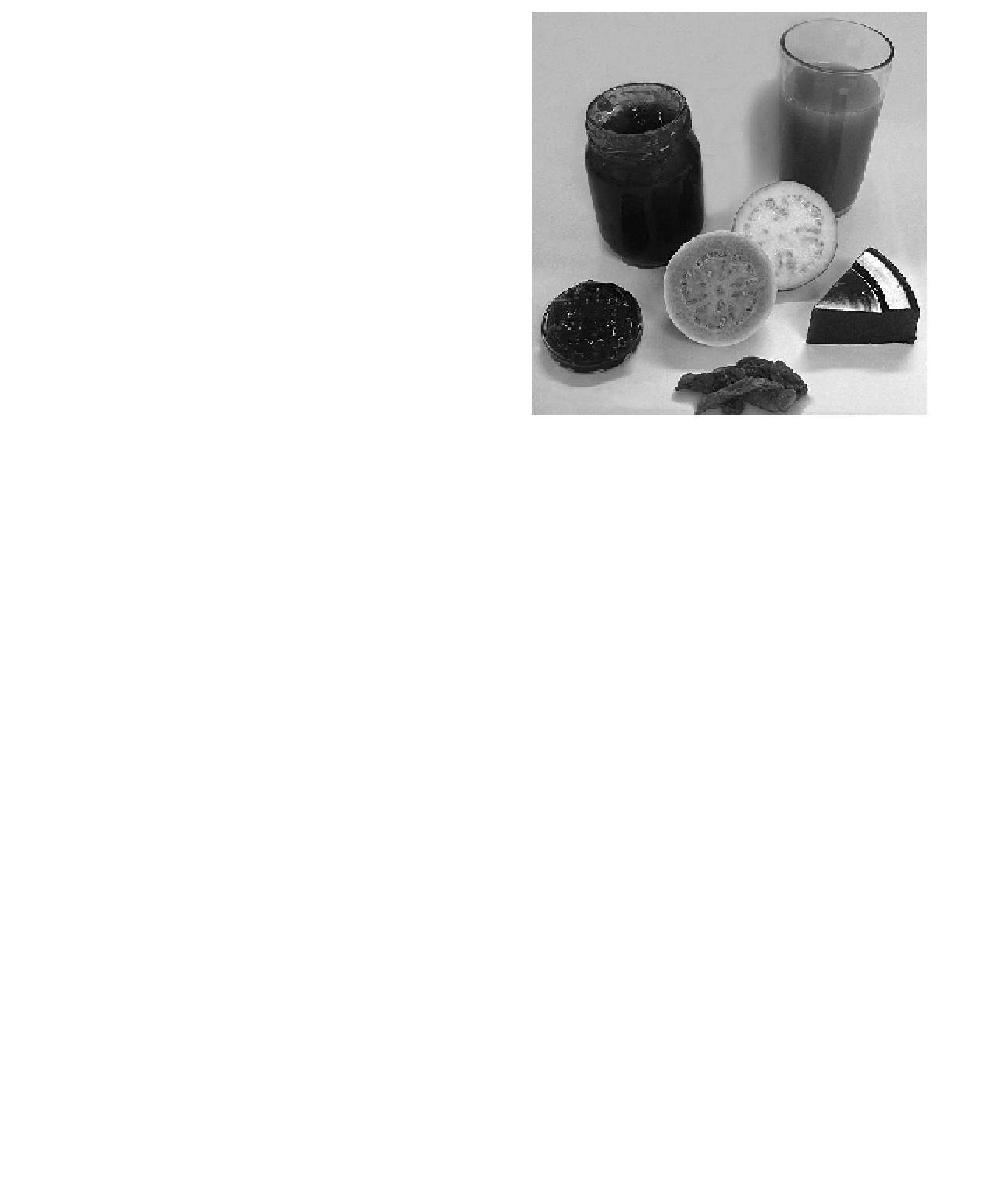Agriculture Reference
In-Depth Information
Quality attributes: physical, chemical,
and sensory
The quality parameters of fresh-cut fruits include appear-
ance, texture, flavor, nutritional value, and microbiological
stability. Although the quality evaluation criteria are similar
for minimally and traditionally processed products, there is
a greater emphasis on visual characteristics in the former
(Kader, 2002; Pereira et al., 2004).
The major problems in minimal processing are the physi-
ological changes caused by peeling and cutting, which may
result in damage to the guava appearance and the possible
contamination by fungi, bacteria, and yeasts. Moreover,
senescence can be accelerated and odors can be developed
with the acceleration of the respiration and ethylene produc-
tion caused by local damage. Damage to the tissue also leads
to a loss of vitamin C from minimally processed guava,
which may be indicative of fruit senescence (Mattiuz et al.,
2003). Mechanical injuries damage the antioxidant systems
and allow for the oxidative depletion of ascorbic acid.
1
3
2
4
Figure 11.2.
White and pink guavas and some
processed products: (1) nectar, (2) jam, (3)
goiabada, and (4) dried snacks. For color detail,
please see color plate section.
Microbiological safety aspects
In recent years, with the increasing consumption of mini-
mally processed fruits, the number of processors produc-
ing and commercializing fresh-cut fruits has increased sig-
nificantly. Thus the microbiological hazards of minimally
processed fruits have become a focus of the regulatory
agencies. Minimal processing facilitates fruit contamina-
tion by spoilage and pathogenic microorganisms because
of the excessive handling and increased tissue damage,
which provide a potentially richer source of nutrients as
compared to raw and intact fruits. These factors associ-
ated with high water activity (
a
w
) and low acidity facilitate
microbial growth.
A number of microorganisms may be present in mini-
mally processed products, and counts of 10
5
-10
7
CFU/g
are frequently found in these products (O'Beirne and
Zagory, 2009). The most common pathogens found in fresh-
cut fruits are
Listeria monocytogenes, Escherichia coli
O157:H7,
Salmonella
sp.,
Clostridium botulinum, Yersinia
entercolitica, Staphylococcus aureus,
and
Aeromonas hy-
drophila,
while the spoilage microorganisms commonly
found in these products are
Pseudomonas
sp.,
Enterobacter
agglomerans,
lactic bacteria, fungi, yeasts, viruses, and par-
asites (O'Beirne and Zagory, 2009). However, a sanitizing
step is efficient in controlling the growth of mesophilic mi-
croorganisms in fresh-cut guava (Lima et al., 2010). More-
over, the combined use of refrigeration, MAP, and sanitary
control as minimal processing steps can considerably re-
duce the total count to
<
10
3
CFU/g and lead to the absence
of total coliforms in minimally processed guava (Mattiuz
et al., 2003).
PROCESSING AND PROCESSED
PRODUCTS
Although commonly consumed as fresh fruit, guava is also
processed into a number of products such as puree, jellies,
jams, juice, and canned and dehydrated and/or dried snacks
(Fig. 11.2). In some products, the fruit is maintained in
its original shape or close to it (e.g., halves, slices), but
in most cases, the fruit is first converted into puree before
further processing.
The degree of ripening and the guava variety used can
vary considerably, depending on the product and the target
market. Moreover, some factors such as the content of pulp,
color, texture, seeds, sugars, acids, pectin, and tannins in the
fruit should be considered in guava processing (Salunkhe
and Desai, 1984; Adsule and Kadam, 1995). In Brazil, as
occurred in other guava-producing countries, new varieties
with less seeds, higher acidity, more intense color, and/or
a higher amount of ascorbic acid have been developed for
industrialization (Martin and Kato, 1988).
Processing of whole fruits and fruit pieces
Canned guava or guava in syrup, osmotic dehydrated fruits,
and dried snacks are some examples of guava products that
are presented in the form of the whole fruit, halves, or

Search WWH ::

Custom Search